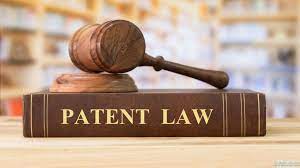patent licensing is a vital aspect of intellectual property that permits patent holders to make money from their inventions and grant others the right to use, produce or sell their patented technology. Understanding the ins and outs of patent licensing is essential for entrepreneurs, inventors and legal professionals as well.
What is Patent Licensing?
A patent license is a legal contract between a patent owner (licensor) and another other party (licensee) that gives the licensee permission to utilize the patented invention subject to certain conditions. The arrangement may be exclusive, meaning that only the licensee is able to use the patent or non-exclusive, allowing more licensees and multiple users to benefit from rights. The license may be a blanket patent or specific uses that the patent is based on.
Types of Patent Licenses
Exclusive License: This kind of license provides the licensee with sole rights to use the patented invention, meaning the licensor cannot grant rights to others. Exclusive licenses are often sought-after because they offer the licensee an advantage over competitors.
Non-Exclusive License: Here the licensor has the option to grant a license for the patent to multiple parties. This is a great option for patent holders seeking to increase their revenue.
Sole License Sole License: In this case only the licensee is able to make use of the patent However, the licensor retains the right to use it as well. It is a hybrid of the exclusive as well as non-exclusive licensing.
Cross-License: This is the process of two parties granting each other the right to use their respective patents. Cross-licensing can be advantageous in collaborative industries, where companies profit from sharing technology.
Key Considerations in Patent Licensing
In negotiating the patent licensing contract, a variety of aspects must be taken into consideration:
Licence Agreements usually include royalty payments that are based on the sales or profits generated from the patented technology. Determining a fair royalty rate is crucial to both the parties.
Territorium: The contract should identify the regions of the world where it is legal to use the licence, as patent rights can vary significantly depending on the jurisdiction.
The duration of licensing agreements usually have a predetermined time frame, and after that the rights revert to the licensor, unless renewed.
Licenses: The field of use can limit the use of the patent-protected invention to specific industries or markets.
Conclusion
patent licensing is an effective method for businesses and inventors to make use of their intellectual property, while also encouraging innovation. Through understanding the different types of licenses and key considerations, both licensors and licensees are able to create agreements that benefit both parties which drive growth and technological advancement.



